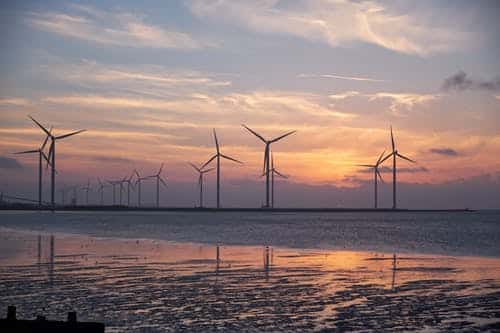First U.S. Freshwater Wind Farm to Move Forward as Ohio Board Removes Restrictions

The Ohio Power Siting Board on Oct. 8 issued an order removing restrictions on nighttime operations of Icebreaker Wind Inc.‘s 20.7- megawatt offshore wind demonstration project in Lake Erie, paving the way for the nation’s first freshwater wind project to move forward. In a construction certificate issued in May, the board imposed 33 conditions including curtailing turbine operations during nighttime hours for eight months of the year, in order to mitigate the impacts on birds and bats, rendering the project economically unviable.
The condition disappointed the project developers, who said that the shutdown condition renders the project financially unviable and also reneges on the agreement reached with the board staff last year. Lake Erie Energy Development Corporation (LEEDCo), an ohio-based nonprofit, in collaboration with Fred. Olsen Renewables, a Norwegian company, formed Icebreaker Wind, which is developing the project. The six-turbine demonstration wind farm, located 8-10 miles off the shore of Cleveland, will help assess the viability for future larger-scale projects in the Great Lakes region. The facility will interconnect with the Cleveland Public Power transmission system, and it would be able to power more than 7,000 homes.
The May order prompted project developers and a bipartisan group of 32 Ohio legislators sought reconsideration of the restrictions. In a July 29 letter to the board, the legislators said they were puzzled that the board re-inserted the condition which its own staff deemed unnecessary to meet the statutory standard and urged the board to grant the developer’s request for reconsideration and remove the “poison pill” provision. The legislators explained that the order unlawfully requires separate approvals for construction and nighttime operation as the siting board certificate, by law, applies to both construction and operation. The project developer highlighted that the nuclear subsidy scandal in the state gives additional cause for reconsideration given that fossil fuel interests opposed the innovative project.
In its rehearing order, the board agreed that the default bird and bat risk mitigation protocol condition can be removed provided that, prior to any construction or operation, the board addresses mitigation measures that apply to the project.
EnerKnol Pulses like this one are powered by the EnerKnol Platform—the first comprehensive database for real-time energy policy tracking. Sign up for a free trial below for access to key regulatory data and deep industry insights across the energy spectrum.
ACCESS FREE TRIAL